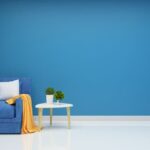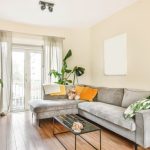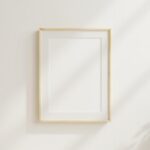Home decor trends are constantly evolving, with new styles, colors, and patterns emerging each season. In today’s fast-paced world, it is essential to stay updated and in-the-know when it comes to interior design choices.
Whether you are looking to revamp your living room or simply add a touch of freshness to your home, keeping up with the latest trends can help you create a space that is not only visually appealing but also reflective of your personal style.
From timeless classics that never go out of style to bold and vibrant color schemes, there are countless ways to transform your home into a trendy haven. Many homeowners are embracing biophilic design, bringing nature indoors through the use of houseplants, natural materials, and large windows. This growing trend not only creates a visually stunning space but also improves well-being and productivity.
Another exciting trend in home decor is the shift from minimalism to maximalism. Eclectic styles that blend various colors, patterns, and eras have gained popularity as people seek to express their individuality through their living spaces. Additionally, technology has become an integral part of interior design, with smart homes becoming increasingly common. From automated lighting systems to voice-activated appliances, integrating innovative tech into our homes has never been easier.
In this article series, we will explore these trends and many more in detail. We will provide inspiration on how to incorporate sustainable and eco-friendly choices into your home decor while staying on budget. We will also discuss tips on mixing vintage and modern elements harmoniously for a unique aesthetic.
Get ready to dive into the ever-changing world of home decor trends. By staying informed about the latest developments in interior design, you can transform your house into a stylish sanctuary that reflects your personal style while keeping up with what’s in and what’s out in the world of home decor. So let’s get started and embrace our inner interior designers.
The Timeless Classics
When it comes to home decor, trends may come and go, but there are certain design elements that have stood the test of time and continue to be popular. These timeless classics add a sense of sophistication and elegance to any space, making them a safe bet for those who want to create a timeless look in their homes.
One classic trend that never goes out of style is minimalism. Minimalist design embraces simplicity and clean lines, creating a clutter-free and visually calming environment. This approach focuses on the essentials, with neutral color schemes and understated furnishings as key elements. Minimalism allows spaces to feel open and airy while highlighting the beauty of each individual piece within the room.
Neutral color schemes are another classic choice in home decor that never goes out of style. Colors like white, beige, gray, and taupe provide a versatile backdrop for any design style or theme. They create a sense of calmness and allow other elements in the room to stand out. Whether in furniture, walls, or accessories, neutrals bring a timeless aesthetic and can easily be updated with pops of color through artwork or accent pieces.
Clean lines are also fundamental in creating classic home decor. Furniture with sleek profiles and geometric shapes contributes to a modern yet timeless feel. These simple lines give spaces an organized appearance while promoting a sense of balance and harmony. Incorporating clean lines in architectural features like windows and doors can further enhance this classic look.
| Classic Home Decor Trends | Description |
|---|---|
| Minimalism | Embraces simplicity and clean lines, creating a clutter-free and visually calming environment. |
| Neutral Color Schemes | Colors like white, beige, gray, and taupe provide a versatile backdrop for any design style or theme. |
| Clean Lines | Furniture with sleek profiles and geometric shapes that contributes to a modern yet timeless feel. |
The Rise of Biophilic Design
Biophilic design is a rising trend in the world of interior design as people seek to create spaces that feel more connected to nature. This design concept involves bringing natural elements indoors, such as houseplants, natural materials, and large windows, in order to enhance our well-being and create a sense of tranquility within our living spaces.
One key element of biophilic design is the incorporation of houseplants. Plants not only add visual interest and beauty to a space but also have numerous health benefits. They purify the air by removing toxins and releasing oxygen, creating a healthier indoor environment. Popular choices for indoor plants include peace lilies, snake plants, and pothos. These plants are known for their ability to thrive in low-light conditions and require minimal care.
In addition to houseplants, natural materials play a significant role in biophilic design. Materials such as wood, stone, and bamboo bring an organic feel to a space and help create a closer connection with nature. Incorporating these materials into furniture, flooring, or wall coverings can add warmth and texture to a room. Reclaimed or recycled wood can also be used to reduce environmental impact while giving a space a unique character.
Large windows are another important feature in biophilic design as they allow an abundance of natural light to fill a room and provide views of the outdoors. The presence of natural light has been shown to improve mood and productivity while reducing stress levels. Additionally, having windows that open can promote better airflow within the space, creating a healthier living environment.
In summary, biophilic design is all about embracing nature within our homes through the use of houseplants, natural materials, and large windows that allow for ample natural light and views of the outdoors. By incorporating these elements into our interior spaces, we can create environments that promote well-being while bringing the beauty of nature indoors.
The Bold and the Beautiful
In recent years, there has been a noticeable shift towards bolder and more vibrant colors in home decor. Gone are the days of muted tones and neutral palettes dominating interior design. Instead, homeowners and designers are embracing vibrant hues and eye-catching patterns to add excitement and personality to their spaces. This section will explore the resurgence of bright colors and bold patterns in home decor, as well as provide insights into incorporating these elements successfully.
One of the key trends in home decor is the use of jewel tones. Rich emerald greens, deep sapphire blues, and luxurious ruby reds are just a few examples of jewel-toned colors that have become increasingly popular. These deep, saturated hues can make a statement in any room and instantly add a sense of opulence and drama. When using jewel tones, it’s important to balance them with neutral or lighter shades to prevent overwhelming the space.
Geometric patterns have also made a strong comeback in interior design. From trendy chevron prints to intricate Moroccan tiles, geometric designs add an element of visual interest and energy to any room.
They can be incorporated through wallpapers, area rugs, throw pillows, or even statement pieces of furniture. Mixing different patterns is another trend worth trying out; however, it’s essential to ensure that there is some harmony between the various designs by sticking to a consistent color palette or theme.
Abstract designs are another way to bring boldness into your home decor. Abstract art has gained popularity for its ability to spark conversation and create an intriguing focal point within a room. Whether it’s through paintings on walls or sculptures displayed on shelves, abstract pieces make a unique statement while adding a touch of sophistication.
To summarize, vibrant colors and bold patterns have become essential elements in contemporary home decor trends. Jewel-toned colors bring depth and richness to rooms when balanced with lighter tones. Geometric designs create visual interest while abstract art adds an avant-garde touch. Embracing these trends allows homeowners to infuse their spaces with personality and create a visually stunning environment.
| Examples of Vibrant Colors and Patterns | Popular Application |
|---|---|
| Jewel tones: emerald green, sapphire blue, ruby red | Accent walls, furniture upholstery, decor accessories |
| Geometric patterns: chevron prints, Moroccan tiles | Wallpapers, area rugs, throw pillows |
| Abstract designs: paintings, sculptures | Focal points on walls or displayed on shelves |
As shown in the table above, there are various ways to incorporate vibrant colors and bold patterns into your home decor. By carefully selecting colors and choosing the right applications for each pattern, you can make a significant impact on the overall aesthetic of your space. Remember to strike a balance between boldness and restraint to create a harmonious atmosphere that is both visually exciting and pleasing to the eye.
Bye-Bye Minimalism, Hello Maximalism
In recent years, there has been a noticeable shift in home decor trends from minimalism to maximalism. The concept of embracing eclectic style has gained popularity among interior design enthusiasts who want to create spaces that are vibrant, expressive, and filled with personality. Rather than adhering to strict design rules, maximalism encourages a mix of styles, colors, and patterns in a harmonious way.
To successfully achieve an eclectic look without overwhelming the space, it is important to establish a sense of cohesion amidst the diverse elements. Here are some tips for embracing eclectic style in your home decor:
Start with a Neutral Base
While maximalism allows for an abundance of colors and patterns, it is helpful to begin with a neutral foundation. Choose a neutral color palette for larger surfaces like walls and furniture to provide balance and allow other elements to shine.
Layer Patterns and Colors
One of the key characteristics of eclectic style is the mixing of different patterns and colors. Experiment with bold prints on upholstery, rugs, curtains, or wallpaper while keeping them visually cohesive by incorporating complementary colors or themes.
Mix Old and New
Combine vintage or antique pieces with modern furniture to add depth and interest to your space. Pair an ornate antique table with sleek contemporary chairs or display vintage artwork alongside minimalist wall decor.
Play with Accessories
Accessories are a great way to infuse personality into your space. Mix and match decorative items like throw pillows, vases, sculptures, or artwork from different eras and styles to create an eclectic collage that reflects your unique taste.
By embracing eclectic style in your home decor choices, you can unleash your creativity and showcase your individuality in your living space. Remember, the key is to strike a balance and maintain visual cohesion while combining various styles, colors, and patterns. With some experimentation and a fearless approach, you can transform your home into a stunning representation of eclectic design that is sure to impress.
Smart Homes and Innovative Tech
In today’s digital age, technology has become an integral part of our daily lives. From smartphones to smart appliances, it seems that everything is becoming “smart” and connected. This trend has also extended to the world of interior design, with the rise of smart homes and innovative tech in home decor. In this section, we will explore the various ways in which technology can be seamlessly integrated into interior design, creating a modern and tech-savvy home.
Home Automation: Streamlining Your Space
One of the key aspects of integrating technology into interior design is through home automation. Home automation allows you to control various aspects of your home – from lighting to temperature to security systems – with just a tap on your smartphone or a simple voice command. This not only adds convenience to your daily life but also enhances the overall functionality and efficiency of your space.
For example, with smart lighting systems, you can easily adjust the brightness and color temperature in each room to suit different moods or activities. Smart thermostats allow you to remotely control your home’s heating and cooling system, optimizing energy usage and reducing utility bills. And with smart security systems, you can monitor your home from anywhere in the world, providing peace of mind even when you’re away.
Voice Control: A New Level of Convenience
Another exciting development in integrating technology into interior design is the rise of voice control devices such as Amazon Echo or Google Home. These devices allow you to control your smart home devices simply by speaking commands aloud.
Imagine walking into your living room and effortlessly saying “Hey Google, dim the lights” or “Alexa, play my favorite playlist,” seamlessly transforming your space into whatever ambiance you desire. Voice control not only adds a new level of convenience but also eliminates the need for multiple remotes or switches cluttering up your living space.
Eco-Friendly Innovations: Saving Energy, Saving the Planet
In addition to convenience and functionality, technology can also play a significant role in creating sustainable and eco-friendly homes. With the advancements in energy-efficient appliances, smart thermostats, and lighting systems, homeowners now have more control over their energy consumption.
Smart home technology can automatically adjust temperature settings based on occupancy patterns or natural sunlight, reducing unnecessary energy usage. Energy-saving lighting systems use LED bulbs that consume less electricity and last longer than traditional incandescent bulbs. By integrating these eco-friendly innovations into their interior design choices, homeowners can make a positive impact on the environment while enjoying the benefits of a modern and tech-savvy home.
Integrating technology into interior design is not just a passing trend but rather an evolution in how we interact with our living spaces. From home automation to voice control devices to eco-friendly innovations, there are countless ways to embrace smart homes and innovative tech in your home decor. By staying informed about the latest advancements, you can create a space that is not only aesthetically pleasing but also functional and efficient in today’s digital world.
Sustainable and Eco-Friendly Choices
In today’s world, there is an increasing emphasis on sustainability and eco-conscious choices. This trend has extended to the realm of home decor, with more and more people opting for green living in their interior design choices. Incorporating sustainable and eco-friendly elements into your home not only benefits the environment but also creates a healthier and more holistic living space. Here are some key considerations for embracing sustainable and eco-friendly choices in home decor.
Use of Recycled Materials
One major aspect of green living in home decor involves utilizing recycled materials. Instead of buying new furniture or accessories, consider repurposing or upcycling items that already exist. Not only does this reduce waste, but it can also add character and uniqueness to your space. For example, you can transform old wooden pallets into a stylish coffee table or use reclaimed wood for flooring or accent walls.
Energy-Efficient Lighting
Another important consideration in sustainable home decor is energy-efficient lighting. Opt for LED bulbs instead of traditional incandescent ones, as they consume less energy and last much longer. Additionally, consider installing smart lighting systems that allow you to control the intensity and timing of your lights, further optimizing energy consumption.
Low VOC (Volatile Organic Compound) Paints
When it comes to painting your walls or furniture, choose low VOC paints. VOCs are chemicals found in many conventional paints that can release toxic fumes into the air even after drying. Low VOC paints have fewer harmful substances and provide a healthier indoor air quality for you and your family.
Sustainable Fabrics
When selecting fabrics for upholstery, curtains, or bedding, opt for sustainable options such as organic cotton, linen, hemp, or bamboo fibers. These materials are grown without the use of harmful pesticides or fertilizers and have a smaller impact on the environment. Additionally, consider choosing fabrics that are certified by organizations like Global Organic Textile Standard (GOTS) or Oeko-Tex to ensure their sustainability.
Indoor Plants
Lastly, don’t forget the power of indoor plants in bringing nature into your home decor. Not only do they add a vibrant touch of greenery, but they also improve air quality by absorbing carbon dioxide and releasing oxygen. Choose houseplants that are known for their air-purifying qualities, such as snake plants, peace lilies, or spider plants.
By incorporating these sustainable and eco-friendly choices into your home decor, you can create a space that not only looks beautiful but also promotes a healthier and more environmentally conscious lifestyle. Not only will you enjoy the benefits of green living personally, but you will also contribute to the larger goal of creating a more sustainable world for future generations.
Mixing Old and New
In the world of home decor, the blending of vintage and modern elements has become a popular trend known as vintage and modern fusion. This style allows for a unique and timeless aesthetic that combines the best of both worlds. By incorporating antique pieces with contemporary design elements, homeowners can create a space that is rich in history while still maintaining a sense of modernity.
One way to achieve vintage and modern fusion in home decor is by pairing antique furniture with contemporary artwork. For example, a vintage wooden dining table can be complemented by sleek, modern chairs. This blending of styles creates an interesting juxtaposition that adds visual interest to the space. Additionally, incorporating contemporary art pieces on the walls can further enhance this fusion of old and new.
Another way to achieve this style is by incorporating vintage-inspired accessories into a modern space. Items such as vintage-inspired light fixtures, throw pillows with retro patterns, or antique-style mirrors can add a touch of nostalgia to any room. These additions can create a sense of warmth and character amidst an otherwise sleek and minimalist design.
When mixing old and new elements, it’s important to find cohesion between different eras and styles. One way to achieve this is by choosing a unifying color scheme throughout the space. This could mean incorporating pops of bold colors against neutral backdrops or utilizing monochromatic tones for a more subtle approach. Balancing the use of contrasting textures can also help bring harmony between old and new elements.
Ultimately, achieving vintage and modern fusion in home decor is all about finding the right balance between past and present aesthetics. By thoughtfully combining antique pieces with contemporary design choices, homeowners can create spaces that tell a story while still feeling fresh and current. So go ahead, embrace your love for both history and progress, and transform your home into a beautiful blend of old and new trends.
Out with the Old, In with the New
In the fast-paced world of home decor, trends come and go quickly. If you want to keep your space looking fresh, it’s important to update your home decor to align with the current trends. However, this doesn’t mean you have to completely overhaul your entire space or spend a fortune on new furniture and accessories. With a few simple changes and creative touches, you can easily transform your home into a trendsetting haven.
One budget-friendly option for updating your home decor is to focus on smaller details. Consider swapping out outdated light fixtures for more modern designs or updating your cabinet hardware with sleeker options. These small changes can make a big impact on the overall look and feel of your space without breaking the bank.
Another way to update your home decor without spending a fortune is through DIY projects. Get creative and try your hand at painting an accent wall in a trendy color or repurposing old furniture with a fresh coat of paint. DIY projects not only allow you to customize your space but also give you the opportunity to showcase your personal style while staying on-trend.
Lastly, don’t underestimate the power of simple changes in textiles and accessories. Switching out throw pillows, curtains, or rugs in trendy colors or patterns can instantly refresh the look of any room. Additionally, incorporating statement pieces like bold artwork, unique vases, or stylish mirrors can help elevate the overall aesthetic of your space.
Updating your home decor for current trends doesn’t have to be overwhelming or expensive. By focusing on smaller details, embracing DIY projects, and incorporating trendy textiles and accessories, you can easily stay on-trend without breaking the bank. So go ahead and unleash your inner interior designer as you transform your home into a beautiful and trendsetting space that reflects your personal style.
Conclusion
In conclusion, keeping up with home decor trends can be an exciting journey that allows you to explore your creativity and transform your space into a beautiful, trendsetting haven. Throughout this article, we have explored various aspects of home decor trends, from timeless classics to the rise of biophilic design and the embrace of maximalism. We have also delved into the integration of smart home technology, the importance of sustainable choices, and the fusion of vintage and modern elements.
While it’s important to stay updated on current trends, it is equally essential to embrace your inner interior designer and infuse your personal style into your space. Trends may come and go, but creating a home that reflects your personality and makes you happy will never go out of style. Take inspiration from the various trends discussed in this article but adapt them to suit your taste and preferences.
As you navigate the world of home decor trends, remember to have fun with it. Don’t be afraid to experiment with different styles, colors, patterns, and textures. Mix and match old and new pieces to create a unique aesthetic that speaks to you. Additionally, don’t feel pressured to change everything at once – small updates like swapping out cushions or incorporating a few new accessories can make a big difference.
Ultimately, transforming your home into a stylish haven is an ongoing process that should bring joy. So embrace your inner interior designer, stay on top of current trends while infusing them with your personal touch, and most importantly – enjoy the journey as you create a space that truly feels like home.
Frequently Asked Questions
What are the trends in home decor 2023?
The trends in home decor for 2023 are focused on creating a sense of calm and serenity within one’s living space. Neutral color palettes with earthy tones, such as soft greys, warm beiges, and muted greens, are popular choices for walls and furniture. Natural materials like wood, rattan, and bamboo are also gaining popularity, emphasizing a connection to nature.
Minimalistic designs with clean lines and clutter-free spaces are favored to create a sense of simplicity and order. Additionally, incorporating sustainable and eco-friendly elements into home decor is becoming increasingly important to many homeowners.
What is the trend in summer decor 2023?
The trend in summer decor for 2023 revolves around embracing the outdoors and bringing elements of nature into the home. Outdoor living spaces are being emphasized as an extension of indoor areas, utilizing comfortable seating arrangements, cozy lounges, and vibrant textiles in outdoor fabrics that can withstand the elements.
Natural light is maximized by using sheer curtains or opting for open windows to allow a seamless transition between indoor and outdoor spaces. Tropical motifs such as palm leaves, floral patterns, and bold colors like teal, coral, and lemon yellow inject energy into interior design schemes.
What style of home decor is trending?
The trending style of home decor is leaning towards modern minimalism with touches of warmth and texture. Clean lines, simple forms, and uncluttered spaces define this style while allowing functional aspects to shine through. Neutral color palettes with monochromatic schemes or soft pastels provide a calming atmosphere.
Mixing different textures like velvet, linen, or leather adds depth to the overall design while maintaining a minimalist aesthetic. Incorporating natural elements such as plants or stones creates visual interest without overwhelming the space. Balancing simplicity with cozy accents creates a harmonious blend of contemporary design with inviting comfort.

I’m thrilled to be your companion on this exciting journey through the world of home decor and design. With a passion for turning houses into homes and a keen eye for the finer details, I’m here to help you transform your living spaces into beautiful, functional, and meaningful havens.





